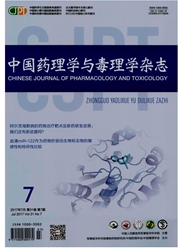

 中文摘要:
中文摘要:
流行病学研究证实,有规律的有氧运动能降低药物滥用的可能性。基础和临床研究显示,运动可作为药物依赖的一种潜在的干预手段,在成瘾依赖的各个阶段产生有益和持久的保护作用。运动的这种保护作用与其调节药物依赖相关的神经适应性改变有关。运动可调节各种神经递质系统以及细胞内信号传递,增加脑源性神经营养因子水平,促进神经再生和胶质细胞再生和调控表观遗传学变化等提升大脑对成瘾物质损害的抵抗力,降低大脑对药物的渴求感,预防复吸。此外,运动的强度、时间和类型不同也会产生不同的神经生物学机制。本文着重从运动干预药物依赖的神经生物学机制方面综述了以运动为基础的单独或辅助其他治疗手段干预药物成瘾。
 英文摘要:
英文摘要:
Epidemiological studies reveal that individuals who are engaged in regular aerobic exer- cise are less prone to drug abuse. Results from animal and human studies indicate that exercise may serve as a potential intervention for drug dependence, producing beneficial and lasting protective effects on different phases of the addiction process. The beneficial effects are connected with neurat adaptation which is related to drug dependence. Exercise can regulate various neurotransmitter systems and intra- cellular signal transmission, increasing levels of brain-derived neurotrophic factors, promoting hippocam- pal neurogenesis and regulating epigenetic molecular mechanisms in resistance to and/or recovery from drug addiction. Therefore, exercise plays an important role in reducing drug carving and preventing re- lapse. Moreover, exercise generally produces different neurobiological mechanisms, depending on the level/type/timing of exercise exposure, the stage of addiction, the drug involved, and the subject popu- lation. This paper, from the perspective of neurobiological mechanisms, reviews exercise-based inter- ventions alone or as an adjunct to other strategies for treating drug addiction.
 同期刊论文项目
同期刊论文项目
 同项目期刊论文
同项目期刊论文
 Decrease of Phosphorylated CREB and ERK in nucleus accumbens is associated with the incubation of he
Decrease of Phosphorylated CREB and ERK in nucleus accumbens is associated with the incubation of he Opioid addiction and withdrawal differentially drive long-term depression of inhibitory synaptic tra
Opioid addiction and withdrawal differentially drive long-term depression of inhibitory synaptic tra Assessment of attitudes towards methadone maintenance treatment between heroin users at a compulsory
Assessment of attitudes towards methadone maintenance treatment between heroin users at a compulsory Long-Term Use of Methamphetamine Disrupts the Menstrual Cycles and Hypothalamic-Pituitary-Ovarian Ax
Long-Term Use of Methamphetamine Disrupts the Menstrual Cycles and Hypothalamic-Pituitary-Ovarian Ax A heroin addiction severity-associated intronic single nucleotide polymorphism modulates alternative
A heroin addiction severity-associated intronic single nucleotide polymorphism modulates alternative 期刊信息
期刊信息
